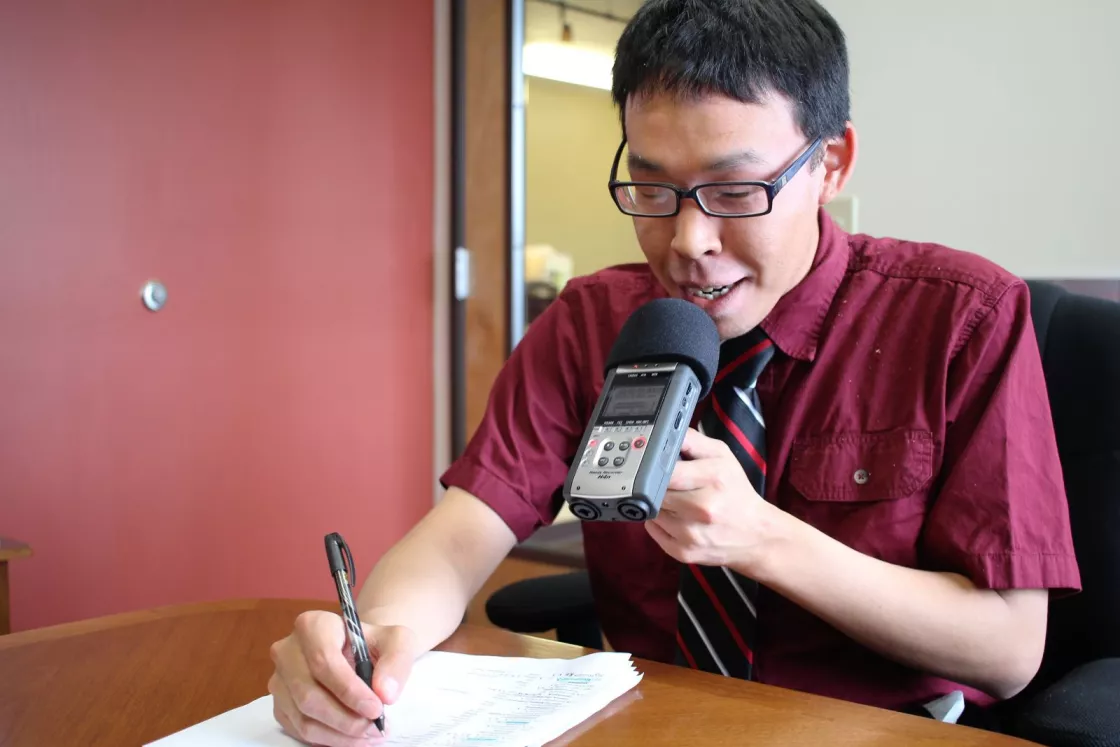The Exchange for Local Observations and Knowledge of the Arctic (ELOKA) is located at the National Snow and Ice Data Center (NSIDC), part of the Cooperative Institute for Research in Environmental Science (CIRES) at the University of Colorado Boulder.
A newly published book chapter discusses the role of technology in sharing and preserving Indigenous Knowledge for future generations. In “Sharing and Preserving Indigenous Knowledge of the Arctic Using Information and Communications Technology,” researchers Heidi McCann and Peter Pulsifer from the Exchange for Local Observations and Knowledge of the Arctic (ELOKA at the National Snow and Ice Data Center (NSIDC)), and Carolina Behe from the Inuit Circumpolar Council-Alaska analyze how digital technologies afford and impact the preservation of documented Indigenous Knowledge (IK) while maintaining cultural significance and intellectual property rights.
For millennia, Indigenous community Elders in Alaska have passed down knowledge to their youth in private and with consent. Tangible knowledge—woven baskets, clothing, and tools—and intangible knowledge like oral histories in stories and songs can now be found in libraries, archives, and museums. However, institutions and collectors have not always respected communities’ intellectual property rights, resulting in discord and a growing movement toward Indigenous information sovereignty.
The digital age offers new methods of maintaining control while sharing and passing IK, but there are challenges. Oral histories are particularly vulnerable to misrepresentation. Stories can take on significance based on when and where they are told, and transforming spoken word into written form may take these stories out of context. So documenting IK in digital form presents risks—misuse of knowledge, knowledge appropriation, and misrepresentation. The more dynamic the medium the more it can provide a comparable, rich context of knowledge and how community members live and have lived over time.
Though Western society and Indigenous Peoples have had a tumultuous history, Arctic research under a changing climate has opened doors for reconciliation. This newly published chapter in the book Indigenous Notions of Ownership and Libraries, Archives and Museums discusses possibilities for more securely transferring documented IK in the modern era. The book is available in archive and library centers and data centers, and can be purchased through the publisher, De Gruyter.
MEDIA CONTACT
Agnieszka Gautier
Science Communications
National Snow and Ice Data Center
press@nsidc.org, +1 303-492-1497
Heidi McCann
Knowledge Exchange Coordinator
Exchange for Local Observations and Knowledge of the Arctic
National Snow and Ice Data Center
heidi.mccann@nsidc.org, +1 303-492-6069
Carolina Behe
Indigenous Knowledge/Science Advisor
Inuit Circumpolar Council-Alaska
carolina@iccalaska.org, +1 907-274-9058

